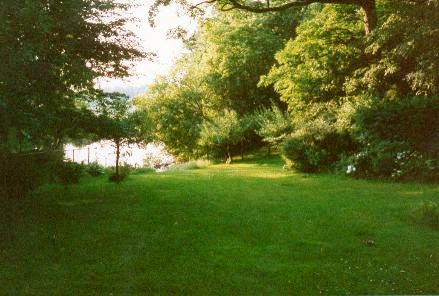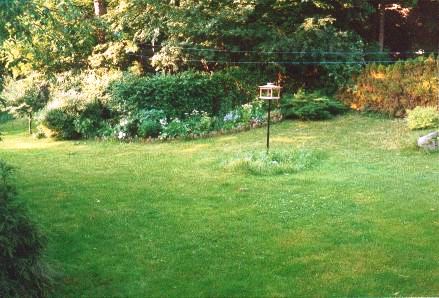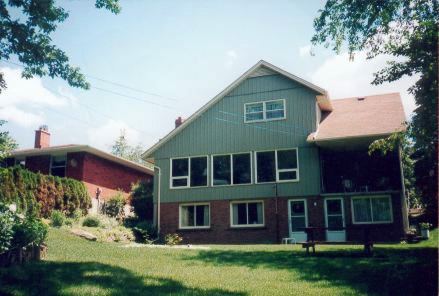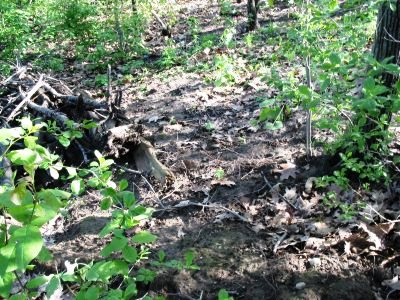 |
|
 |
|
Naturalization of my Property |
|
Backyard - "Before"
|
|
Here are pictures of the
backyard before I did any naturalization work (except for area on the shore of
the pond).
|
| |
 |
1998:
Here is what the backyard looked like for the first 2 summers that I lived
here. I kept the lawn as it was when I moved in.
However, I started to naturalize the
pond slope in 1997, which is visible in the center of the picture in the
mid-distance. I stopped cutting the grass, and gradually planted
native field plants, which thrived and spread. Unfortunately,
I was misled into believing that the herbicide "Roundup" was
safe to use, so I used some in limited amounts in this area. Once I
found out that there was in fact quite a controversy surrounding the
safety of this product I immediately ceased use of it.
|
|
Those are apple trees
at the back. I have never trimmed them, allowing them instead to
grow up and out. They still continue to produce a bountiful crop of
fruit every year, much to the delight of the squirrels!
The big branch hanging over at the very top of the
picture is part of an oak tree. The tree to the left is a large
hawthorn of some sort. |
| |

|
1998:
Another view, looking off to the right of the above picture.
Beyond the birdfeeder you can see the
dense buckthorn hedge that closed off the woods area until I removed most
of it. Very little light got in through this barrier.
I had the bird feeder up early on, and
there's a small pile of rocks at the base of the pole to hold it upright.
It's a lawn desert as far as you can see (well,
almost).
|
|
| |
So, why did I want to get
rid of the lawn?
- Lawns require watering, sometimes
prodigious amounts of it during the dry summer months. I watered
the lawn the first summer I was there. Not only did it require
attention every day, in order to water different areas of it, but my
water bill went through the roof.
- They need weekly cutting, which
entails dragging a noisy, polluting and smelly machine back and forth
over it. Or, in the case of an electric mower, less noise, no
local pollution, but still a pain.
- Weeds are constantly trying to invade
any lawn, requiring ongoing vigilance and work to remove them by
pulling them up. Or, many people use pesticides (poisons).
- Frankly, lawns are boring.
There's no flowers, no variation in the flatness, not very
scenic. Just a flat, green carpet. They all look the same
- a boring
monoculture, just like a field of corn.
- Lawns have very low
biodiversity. This in turn weakens the entire ecosystem. A
non-diverse ecosystem is more susceptible to disease and pests.
- Lawns discourage encourage animal,
bird and insect life. There are exceptions, of course, such as
rabbits. But I have found that rabbits prefer other plants, such
as dandelions! An area of diverse field plants provides food,
shelter and nesting materials for birds and animals. And you
might say that discouraging insect life is good, since they're a pain
anyways. But birds, bats, and other insects eat insects.
So if you like and appreciate birds, for example, then you need to
have food for them. Simple. And interesting insects such
as dragonflies need other insects to prey upon.
|
| |
 |
1996:
This is what the back of the house looked like in the
summer of 1996 before I moved in.
Please remember, when viewing the rear of
this house, that it looks deceptively large, since the basement is the
ground floor at the rear of the house. Notice
how little plant life there is here, except for grass and the gardens
along the edge of the property.
|
|
| |
|
Woods area: Before
|
| |
 |
Here what the woods area
looked like before I had done much with it. This is actually a view
of the neighbour's woods area (my apologies to the neighbours for
using their area as a negative example!). |
|
| |
|
Previous
Next
|
|
|
|